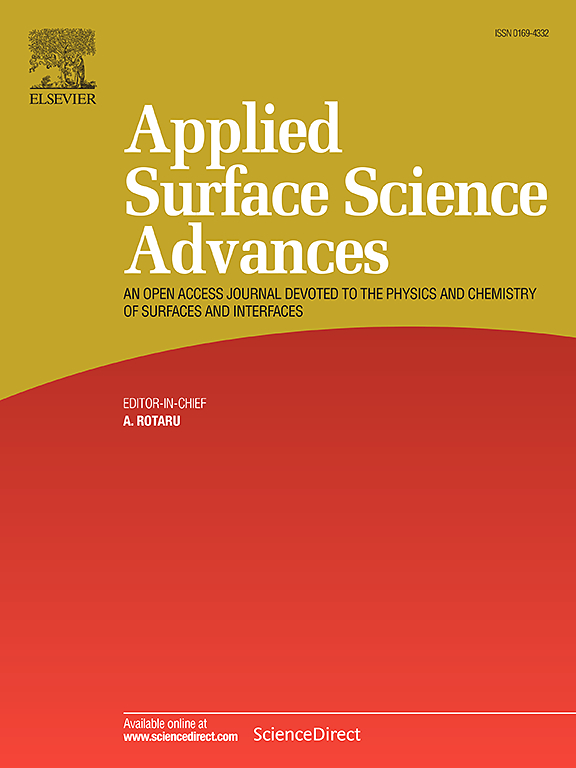Unlocking efficient RhB degradation by silver nanowires and porous graphene doped MoTe2: Combined experimental and DFT insights
IF 8.7
Q1 CHEMISTRY, PHYSICAL
引用次数: 0
Abstract
A novel ternary nanocatalyst (NC) comprising silver nanowires (Ag NWs) and porous graphene (PG) assisted MoTe2 was synthesized via a controlled co-precipitation method for the primary objective of disinfecting contaminated water. A constant 3 % PG improved charge transport, meanwhile (2 and 4 wt. %) Ag NWs effectively regulated MoTe2 growth and recombination dynamics. XRD confirmed the coexistence of monoclinic and rhombohedral phases of MoTe2. Electronic spectroscopy indicated a characteristic absorption in the 400–800 nm range and bandgap energy (Eg) increased from 1.92 to 2.17 eV with the insertion of dopants. FTIR spectra validated the presence of Mo-Te bonding and TEM images illustrated the formation of MoTe2 nanosheets with emergence of porous sheets and Ag NWs with addition of PG and Ag NWs. Notably, 4 wt. % Ag NWs/PG-MoTe2 achieved remarkable 97.28 % rhodamine B (RhB) degradation under acidic conditions attributed to improved charge separation. Density Functional Theory (DFT) calculations used to model and compute the interaction mechanism among RhB and Ag NWs/PG-MoTe2 during adsorption.
银纳米线和多孔石墨烯掺杂MoTe2解锁RhB的有效降解:结合实验和DFT见解
采用可控共沉淀法合成了一种由银纳米线(Ag NWs)和多孔石墨烯(PG)辅助MoTe2组成的新型三元纳米催化剂(NC),其主要目的是对污水进行消毒。恒定的3% PG改善了电荷输运,同时(2和4 wt. %) Ag NWs有效地调节了MoTe2的生长和重组动力学。XRD证实了MoTe2的单斜相和菱形相共存。电子能谱分析表明,掺杂剂在400 ~ 800 nm范围内具有特征吸收,带隙能量(Eg)从1.92 eV增加到2.17 eV。FTIR光谱证实了Mo-Te键的存在,TEM图像证实了MoTe2纳米片的形成与多孔片的出现,以及Ag NWs的加入与PG和Ag NWs的加入。值得注意的是,4 wt. % Ag NWs/PG-MoTe2由于改善了电荷分离,在酸性条件下实现了97.28%的罗丹明B (RhB)降解。密度泛函理论(DFT)计算用于模拟和计算吸附过程中RhB与Ag NWs/PG-MoTe2相互作用机理。
本文章由计算机程序翻译,如有差异,请以英文原文为准。
求助全文
约1分钟内获得全文
求助全文

 求助内容:
求助内容: 应助结果提醒方式:
应助结果提醒方式:


